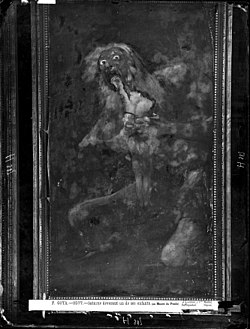

Quinta del Sordo (English: Villa of the Deaf One), or Quinta de Goya, was an extensive estate and country house situated on a hill in the old municipality of Carabanchel on the outskirts of Madrid. The house is best known as the home of Francisco de Goya, where he painted 14 murals known as the Black Paintings . [3] Contrary to popular belief, the estate was given its name due to the deafness of a prior owner, not Goya himself, who was deafened by illness in 1792. [4] The house was demolished in 1909. [3]



